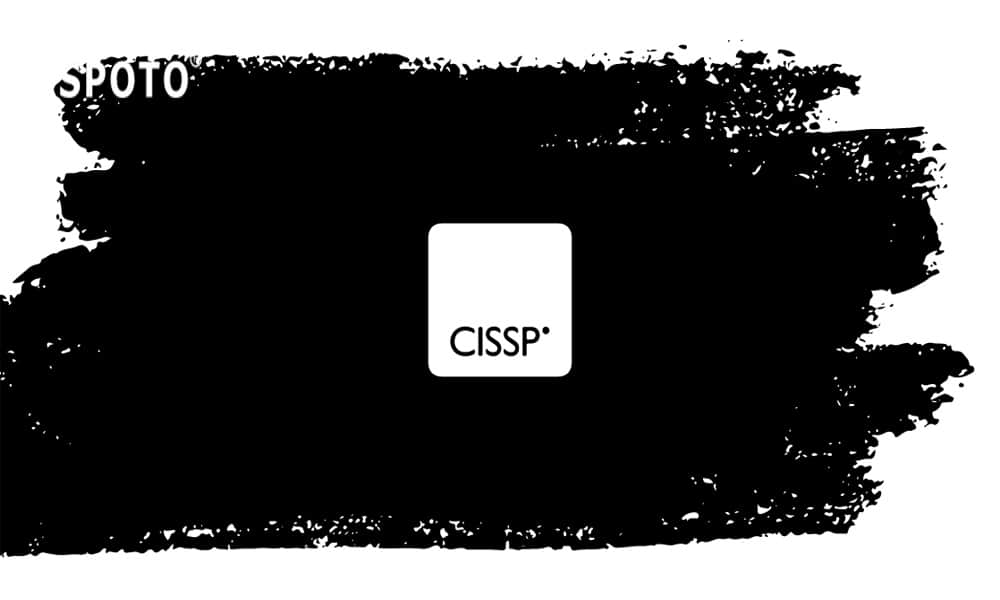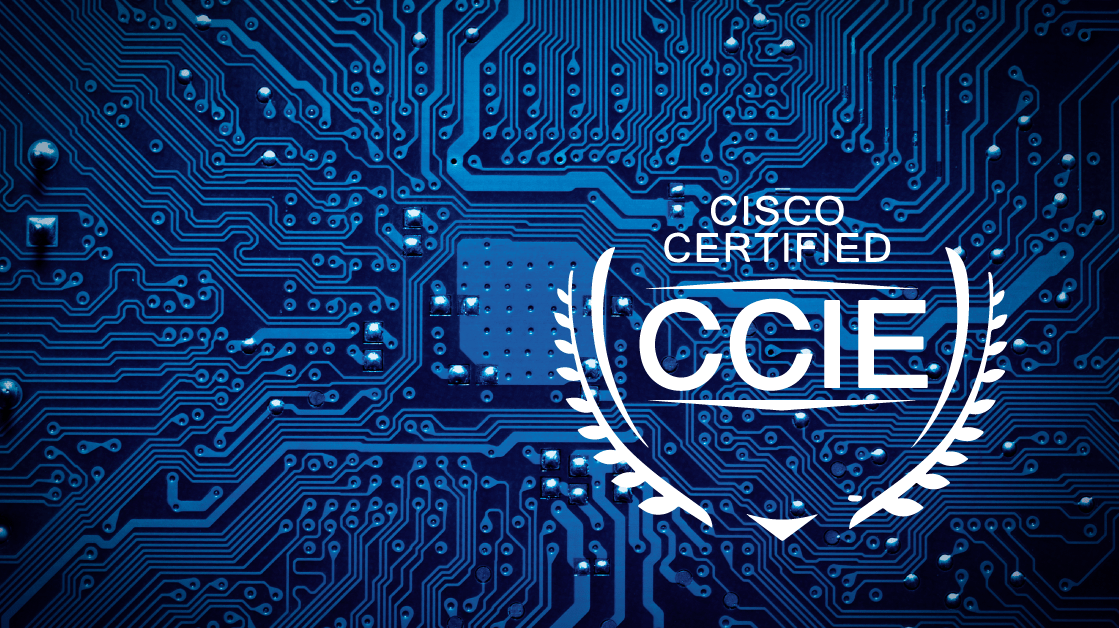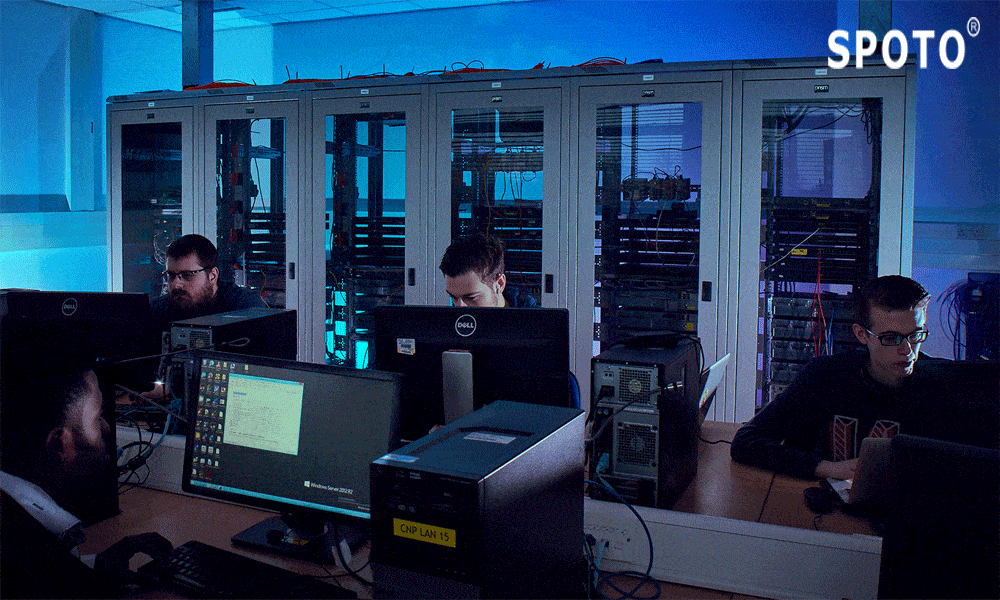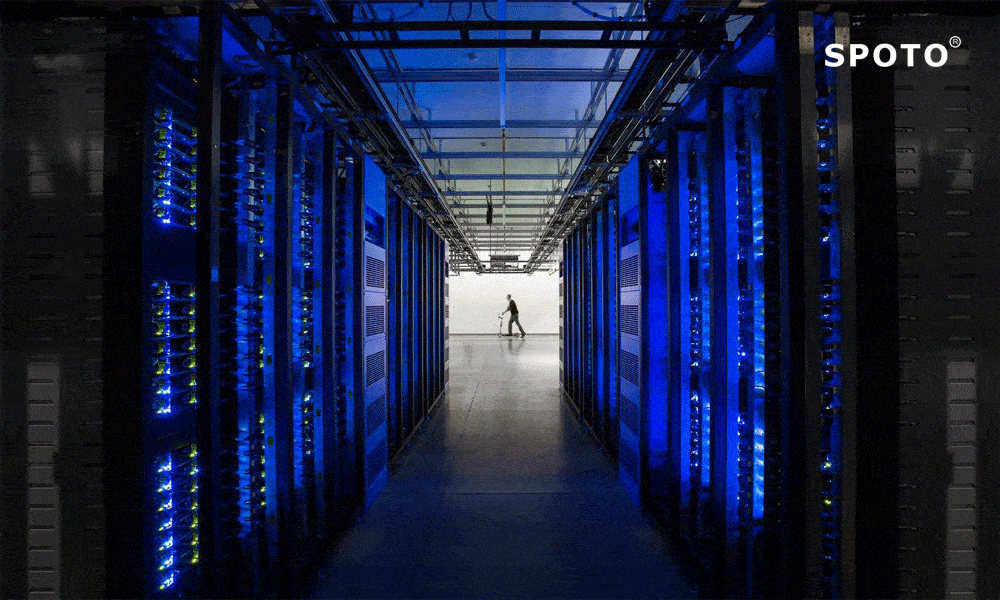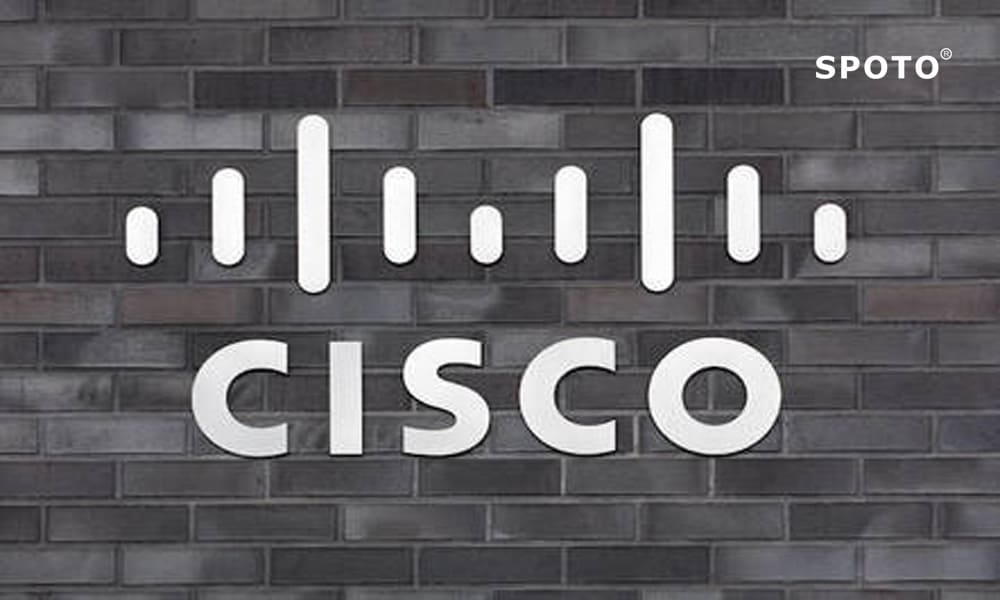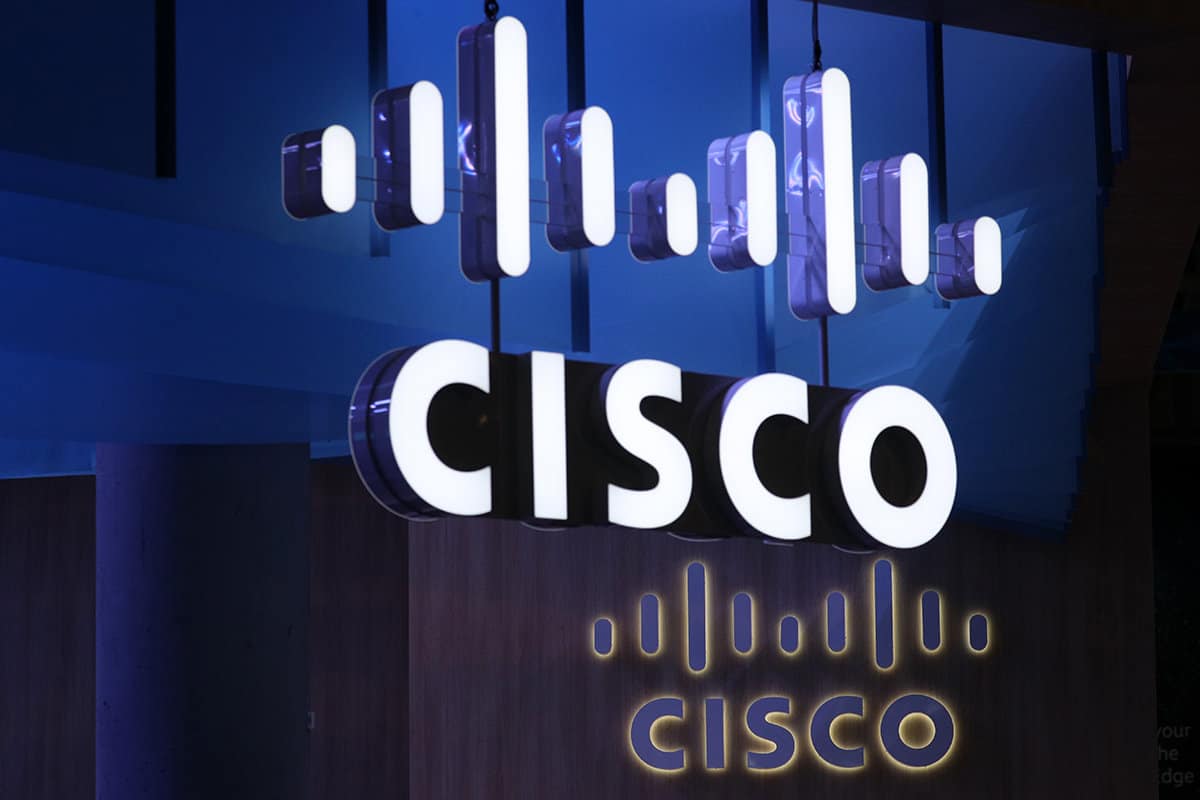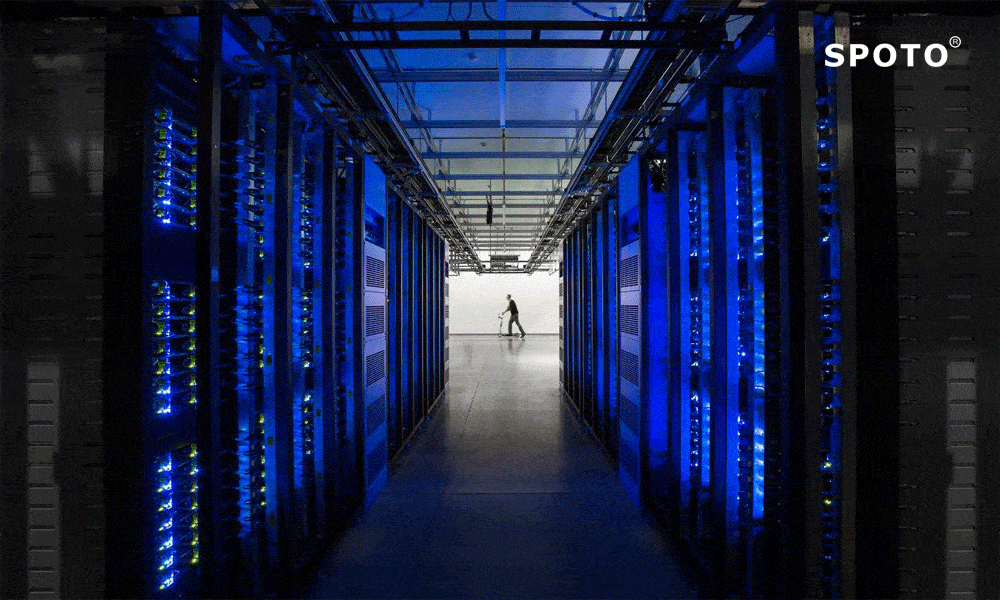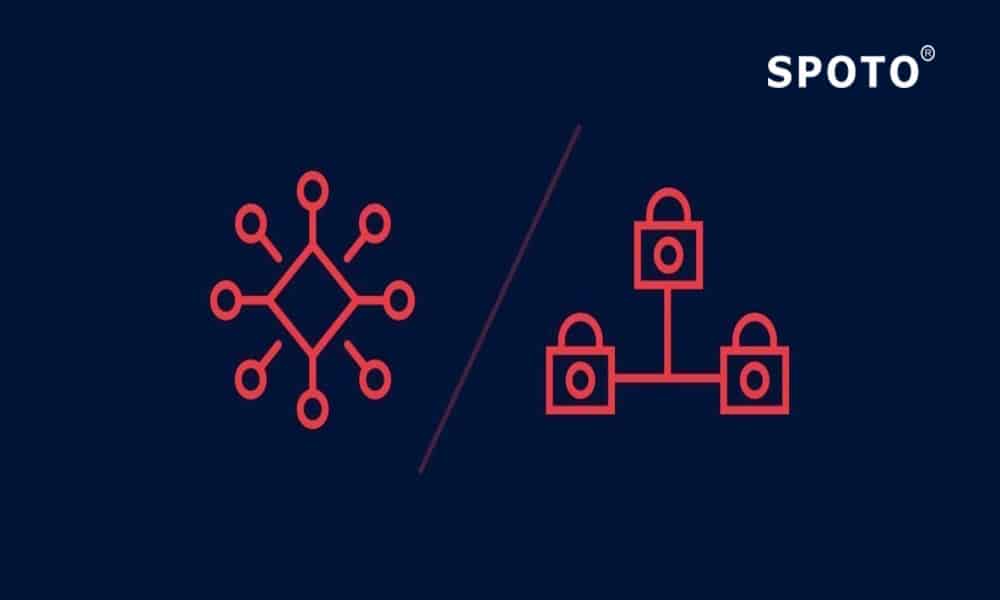-
- Cisco
- 717
- 2024-01-16
Security Models included in the CISSP Exam: Security models of control are to be utilized for determining about how security would be implemented, what subjects could be accessing the system, and what objects they would have access to. Simply stated, they would be a way to formalize security policy. Security models of control are typically implemented by enforcing confidentiality, integrity, or other controls. Keep in mind that each of these models would be laying out broad guidelines and is not specific in nature. Before we discuss them if you wish to have the CISSP in a single attempt, gain it by the prep courses available at SPOTO.
State Machine Model
The state machine model is going to be based on a finite state machine. State machines are going to be utilizing to model complex systems and deals with acceptors, state variables, recognizes, and transaction functions. The state machine would be defining the behavior of a finite number of states, the transitions between those states, as well as actions that could occur.
Finite state model
A state machine model is going to monitor the status of the system in order to prevent it from slipping into an insecure state. Systems that would be supporting the state machine model would need to have all their possible states examined to verify that all processes are controlled. The state machine concept is going to serves as the basis of many security models. The model is going to be valued for knowing in what state the system will reside.
Information Flow Model
The Information Flow model is considered to be an extension of the state machine concept as well as serves as the basis of design for both the Biba models and Bell-LaPadula models, which would be discussed in the sections that follow. The Information Flow model is going to consists of objects, state transitions, and lattice states. The real goal of the information flow model is preventing unauthorized, insecure information flow in any direction. This model and others could make the use of guards. Guards are going to be allowed the exchange of data between various systems.
Noninterference Model
The Noninterference model as defined by Meseguer and Goguen was designed for making sure those subjects and objects of different levels don’t interfere with the objects and subjects of other levels. The Noninterference model would be utilizing inputs and outputs of either low or high sensitivity. Each data access that would be attempted is independent of all others and data cannot cross security boundaries.
Bell-LaPadula
The Bell-LaPadula state machine model would be enforcing confidentiality. The Bell-LaPadula model is going to utilize mandatory access control to enforce the DoD multilevel security policy. For a subject in order to access information, he must have a clear need so as to know and meet or exceed the information’s classification level.
The Bell-LaPadula model would be defined by the following properties:
Simple security property (ss property)
This property would be stating that a subject at one level of confidentiality is considered wouldn’t be allowed to read the information at a higher level of confidentiality. This is sometimes would be referred to as “no read up.”
Star * security property
This property is going to state that a subject at one level of confidentiality isn’t going to be allowed to write information to a lower level of confidentiality. This would also be known as “no write-down.”
Strong star * property
This property states that a subject couldn’t read or write to the object of higher or lower sensitivity.
If you wish to learn more about the Security Models, you could do it through the prep courses offered by the SPOTO.
-
- Cisco
- 688
- 2024-01-18
What You Would be Learning in this Module:
There are 3 main options are available for migration to IPv6 from the existing network infrastructure, dual-stack network, translation, and tunneling. Here we are going to briefly discuss all of these options as well as highlights the advantages of translation and particularly stateful translation, over the other two.
Here we would be discussing the ways to provide a seamless Internet experience to users accessing IPv4 Internet services through completely new “greenfield” IPv6-only networks. We would be even describing how to establish content providers as well as content enablers could transparently provide existing or new services to IPv6 Internet users by deploying Network Address Translation IPv6 to NAT64 IPv4 technology with little or no change in their existing network infrastructure, thus it would also maintain business continuity.
We know, that lots of things are to be discussed, which again wouldn’t be able to discuss in here, but worry not! You could have it all, by joining the Lab Prep Courses offered by the SPOTO. Dual-Stack Network:
Dual stack is considered a transition technology in which IPv4 as well as IPv6 so as to operate in tandem over shared or dedicated links. In a dual-stack network, both IPv4, as well as IPv6, would be fully deployed across the infrastructure, so that configuration and routing protocols would be handled by both IPv4 and IPv6 addressing and adjacencies. Although dual-stack might appear to be an ideal solution, it would be presenting the two major deployment challenges to enterprises as well as ISPs:
It would be requiring a current network infrastructure that would be capable of deploying IPv6. In many cases, however, the current network might not be ready and might require hardware as well as software upgrades.
IPv6 would be needed to be activated on almost all the network elements. To meet this requirement, the existing network might need to be redesigned, posturing business continuity challenges.
Tunneling
Using the tunneling option, organizations would be able to build an overlay network that tunnels one protocol over the other by encapsulating IPv4 packets within IPv6 packets and IPv6 packets within IPv4 packets. The advantage of this approach is that the new protocol would be able to work without disturbing the old protocol, thus it would provide connectivity between users of the new protocol.
Tunneling again has the following two disadvantages:
Users of the new architecture couldn’t use the services of the underlying infrastructure.
Tunneling doesn’t enable users of the new protocol for communicating with users of the old protocol without dual-stack hosts, which again would negate interoperability.
Translation:
Translation which is also known as the Address Family Translation (AFT), would be facilitating the communication between IPv6-only as well as IPv4- only hosts and networks, whether in a transit, access or an edge network by performing IP header as well as address translation between the two address families.
AFT isn’t a long-term support strategy; it would be considered as a medium-term coexistence strategy that could be used to facilitate a long-term program of IPv6 transition by both enterprises as well as ISPs.
The translation would be offering two major advantages:
The translation would provide a gradual migration to IPv6 by providing seamless Internet experience to greenfield IPv6-only users, by accessing IPv4 Internet services.
Existing, content enablers as well as content providers, would be able to provide services transparently to IPv6 Internet users by using the translation technology, with little or no change in the existing network infrastructure, thus you would be able to maintain IPv4 business continuity.
Thus, here we have gained certain information about the NAT64 Technology Connecting the IPv6 and IPv4 Networks. If you wish to have more info, you could gain it by joining the prep courses offered by the SPOTO.
-
- CCIE Lab
- 713
- 2024-01-18
Cisco MSE is a pre-built software solution that comprises one or more VMs (virtual machines) that are updated, packaged, maintained, and managed as a single unit. Cisco MSE is distributed as OVA (Open Virtual Appliance) for installation on a virtual appliance and as an ISO image for installation on a physical appliance.
Cisco MSE acts as a platform, physical or virtual Cisco Mobility Services Engine [MSE] appliance, so as to deploy as well as run the Cisco services. If you wish to have a good hands-on MSE Appliance Installation process, you would be able to do that, by joining the SPOTO.
Limitations for Installing Cisco MSE in a VMware Virtual Machine
Map size must be less than 5 MB in Prime Infrastructure of Cisco.
There must be less than 1000 access points on a single map.
The Mobile Application Server and Wireless intrusion prevention system (wIPS) are not available.
A common NTP server must be used to synchronize the time.
SMTP (Simple Mail Transfer Protocol) Mail Server name, as well as an authentication mechanism, must be used for the Cisco CMX mail notification system.
Cisco CMX 10.2 doesn’t render any data on Cisco Prime Infrastructure maps. In order to allow client display in Cisco Prime Infrastructure 1.4 or later, a parallel Cisco MSE 8.0 is also going to be required.
Cisco MSE Virtual Appliance Deployment Checklist
Cisco Wireless Controller would be having IP connectivity to a Cisco CMX instance.
Cisco Prime Infrastructure would be having IP connectivity to a Cisco CMX instance.
Port 16113 is considered routable from Cisco WLC to the Cisco CMX IP address.
Port 161 for SNMP [Simple Network Management Protocol] traffic is routable from Cisco WLC to the Cisco CMX IP address.
SSH client to log in with the root access to the VM present there.
An SCP (Secure Copy) client, on MAC native or on the installed on PCs, or an SFTP (Secure File Transfer Protocol) exists so as to move files into Cisco CMX OVA, specifically, map files as well as images to upgrade.
Installing a Cisco MSE Virtual Appliance:
After the Cisco MSE is going to be deployed, you would be able to install and configure a Cisco MSE virtual appliance. Note the following points:
Cisco MSE doesn’t have a node install menu. However, there is a first-boot script which would be checked if a configuration exists on the device. If the script doesn’t find a valid configuration, it would be launching the setup routine and initiates network configuration tasks utilizing the CLI, followed by initial setup tasks on the browser.
The new first-boot script would be determining if the initial configuration is completed and then displays the normal login prompt. If the initial configuration isn’t completed, the default login prompt would be displayed.
Creating New Virtual Machines Using Hyper-V Manager:
You would be now able to run Cisco CMX on Microsoft Hyper-V virtualization hosts. This would also enable you to use Cisco CMX on virtual machines utilizing any Hyper-V capable host which would be running Windows Server 2008 R2 or later. You could be creating a new virtual machine using Hyper-V Manager application. Ensuring to specify 24 GB of memory or even higher when creating the virtual machine in Hyper-V manager, as well as to subsequently increasing the processor count for the virtual machine to 8 vCPU or higher before starting the new virtual machine.
Installing Verifying Cisco MSE in a VMware Virtual Machine:
You would be able to verify the overall system health as well as the status of the Cisco MSE services utilizing the System tab in the Cisco MSE user interface. Ensuring that all the services, memory, as well as CPU, would be indicating a healthy status (green) for each Cisco MSE as well as Cisco CMX node and that there would be at least one active Cisco WLC.
For more information, join SPOTO to gain all the practice, which would help you out in the CCIE Lab Exam.
-
- Cisco
- 751
- 2024-01-18
In today's interconnected world, computer networks play a crucial role in enabling communication and data transfer. Two fundamental types of networks, Wide Area Networks (WANs) and Local Area Networks (LANs), serve different purposes and offer distinct advantages. In this article, we'll explore the differences between WANs and LANs, their advantages, and how they complement each other in modern network architectures.
What is a Wide Area Network (WAN)?
A Wide Area Network (WAN) is a geographically distributed telecommunications network that interconnects multiple Local Area Networks (LANs) across different locations. WANs enable communication and data exchange between distant sites, such as a company's headquarters, branch offices, data centers, and cloud services. The internet itself is the most prominent example of a WAN, facilitating global connectivity.
What is a Local Area Network (LAN)?
A Local Area Network (LAN) is a computer network that spans a relatively small geographical area, typically confined to a single building, office, or campus. LANs allow devices within a localized environment to communicate and share resources efficiently. Devices on a LAN can often communicate directly with each other without the need to traverse the public internet, enabling faster data transfer speeds.
Key Differences between WANs and LANs:
Geographical Coverage: WANs span a wide geographical area, while LANs are limited to a smaller, localized region.
Network Ownership: WANs are typically owned and managed by telecommunication providers or internet service providers (ISPs), while LANs are typically owned and managed by organizations or individuals.
Speed and Latency: LANs generally offer higher data transfer speeds and lower latency compared to WANs due to their localized nature and direct connections between devices.
Security: LANs are typically more secure than WANs since they are confined within a limited physical area and can be isolated from external threats more easily.
Advantages of LANs:
Cost-effective: Implementing a basic LAN is relatively inexpensive compared to establishing a WAN infrastructure.
Easy Management: LANs are easier to control and manage since they are contained within a small geographical area.
High-Speed Communication: LANs support high data transfer rates, enabling efficient sharing of files, printers, and other resources among connected devices.
Centralized Resources: With file servers connected to the LAN, sharing files and folders among users becomes streamlined and efficient.
Enhanced Security: It is easier to implement security protocols and protect LAN users from external threats and unauthorized access.
While LANs excel in providing localized connectivity and resource sharing, WANs are essential for enabling communication and data exchange between geographically dispersed locations. Many modern network architectures combine the strengths of both WANs and LANs, utilizing WANs to interconnect LANs across different sites, enabling seamless communication and collaboration within organizations.
If you're pursuing Cisco certifications or seeking to enhance your networking knowledge, SPOTO Online Training Certifications is an excellent resource. Their comprehensive training programs cover a wide range of topics, including LAN and WAN technologies, ensuring you stay up-to-date with the latest industry trends and best practices.
-
- Cisco
- 934
- 2024-01-18
Overview of L2VPN Interworking
L2 transport over MPLS and IP already exists for like-to-like ACs, like Ethernet-to-Ethernet or PPP-to-PPP. L2VPN Interworking would be building on this functionality by allowing disparate ACs to be connected. An interworking function is going to facilitate the translation between the different encapsulations of L2.
Only the following interworking combinations are going to be supported:
ATM-to-Ethernet - Bridged interworking
ATM-to-Ethernet - Routed interworking
Frame Relay-to-Ethernet - Bridged interworking
HDLC-to-Ethernet - Bridged and Routed interworking
PPP-to-Ethernet - Routed interworking
L2VPN Interworking Modes
L2VPN interworking works in either Ethernet (bridged) module or IP (routed) module. L2VPN interworking doesn’t go to support Ethernet VLAN (Type 4) module. If you are appearing for Lab exam of Cisco, you would require to have a good prep course, like it is being offered by the SPOTO.
You could specify the modules in the following ways:
If using the older legacy CLI commands, you could use the internetworking {ethernet | ip } command in the mode of pseudowire-class configuration.
If using the newer L2VPN protocol-based CLI commands, you could use the interworking {ethernet |ip } command in the mode of xconnect configuration.
The interworking command would be going to causes the ACs to be terminated locally. The two keywords would be performed to the following functions:
The ethernet keyword would be causing Ethernet frames to be extracted from the AC and sent over the pseudowire. Ethernet end-to-end transmission would be resumed. AC frames that are not Ethernet would be dropped. In the case of VLAN, the VLAN tag is going to be removed, leaving an untagged Ethernet frame.
The ip keyword would be causing IP packets to be extracted from the AC and sent over the pseudowire. AC frames that don’t contain IPv4 packets would be dropped.
The following sections would be able to explain more about Ethernet as well as IP interworking modes:
Ethernet or Bridged Interworking
IP or Routed Interworking
Ethernet or Bridged Interworking
Ethernet interworking which is also known as bridged interworking. Ethernet frames are considered to be the bridge across the pseudowire. The CE routers could be natively bridging Ethernet or it could be routing by utilizing a bridged encapsulation model, like the BVI (Bridge Virtual Interface) or RBE (Routed Bridge Encapsulation). The PE routers would be operating in Ethernet like-to-like modules.
IP or Routed Interworking
IP interworking which is also known as routed interworking. The CE routers which would encapsulate the IP on the link between the CE router as well as PE router. A new VC type would be utilized to signal the IP pseudowire in MPLS. Translation between the L2 as well as IP encapsulations across the pseudowire would be required. Special consideration needs to be given to the address resolution as well as routing protocol operation because these are going to be handled differently on different L2 encapsulations.
Therefore, address resolution should be terminated on the PE router. End-to-end address resolution is not going to be supported. Routing protocols operate differently over broadcast as well as point-to-point media. For Ethernet, the CE routers must either use static routing or configure the routing protocols so as to treat the Ethernet side as a point-to-point network.
In routed interworking, IP packets that would be needed to get extracted from the ACs are sent over the pseudowire. The pseudowire works in the IP Layer 2 transport like-to-like module. The interworking function at NSP’s (network service provider) end performs that would be required adaptation based on the AC technology. Non-IPv4 packets would be dropped.
So, there were certain things which you would be needed to know regarding the L2VPN Internetworking. If you are pursuing a Lab exam of Cisco, you should check out the courses, which would be offered by the SPOTO.
-
- CISSP
- 551
- 2024-01-16
The training course costs are going to be varied on which training organization you would choose. Here are some facts that you are needed to look upon while.
CISSP Online Training Course Objectives.
CISSP online training courses are needed to be aligned to the (ISC) ² CBK 2018 requirements. The course should train you in the industry’s latest best practices, which will later help you to clear pass the exam in the very first attempt. This certification will help you develop expertise in defining your architecture and using globally recognized information security standards to design, build, and maintain a secure business environment for your organization.
With unprecedented security breaches that are frequently being reported, has given rise to the demand for IT security professionals like never before. According to the report that is presented by Frost and Sullivan there is an expectation of 1.5 million security professionals by the year 2019. Get SPOTO real and valid CISSP dump now for 100% passing in the first try!
Skills provided:
You should lookout for the following skills after completion of the CISSP training:
Enabling yourself to define the architecture, design, and management of the security of your organization.
Acquire the required and relevant knowledge and skills which would help you to pass the CISSP certification exam.
Earning the requisite 30 CPEs that are going to be required to take up the CISSP certification exam.
Developing a working knowledge of yours in the 8 domains that are prescribed by the CISSP CBK or Common Book of Knowledge, 2018.
Targeted Audience:
The CISSP certification is the most globally recognized professional requirement that a candidate would need to ensure their grip in the IT Security domain. This certification is chiefly considered for:
Chief Information Security Officers
IT Directors/Managers
Network Architects
Security Auditors/Architects
Security Consultants/Managers
Security Systems Engineers
Job Titles after CISSP Certification:
Cloud security enablement engineer
Cyber-security strategy leader
Information security audit professional
The Information security manage
Lead information security engineer
Career Benefits of the CISSP Certification:
As you may have heard about the increasing worldwide incidents of information security breaches, it has forced the organizations to do heavy investments in IT security, giving rise to a boom in hiring information security professionals. If you have achieved the CISSP Certification, it would verify you to have the necessary skill sets, which would be including:
Managerial Proficiency And Technical Security
Knowledge of eight important security areas that would range from access control to software development.
Expertise in technologies that would be improving the security structure of an organization.
CISSP Costs:
CISSP Examination Course:
You are needed to have about $699 if you want to appear for the CISSP exam.
CISSP Online Training Course Expense
CISSP Online training and certification programs are going to equip you with the deployment of your expertise about concepts, policies, and standards in the sector of information security governance as well as risk management framework that would be needed for protecting information and assessing the effectiveness of the strategies that have been implied. On average, an organization would nearly charge about $2795 for the CISSP or Certified Information Systems Security Professional online training.
You may spend money on self-study, but you aren’t going to get the relief of having the passing guarantee, which ensures your success and boosts up your confidence level. But again a question would arise which training course to select it. Every CISSP taker would have a variety of recommendations for this purpose. But I would suggest that before getting into any training; just verify the authenticity and terms and conditions before investing in such a course.
I have previously done deep research regarding this and found out that the CISSP Online Training Course provided by the SPOTO CLUB services is the best one according to me, as they provide passing guarantee and valid dumps.
-
- CCIE
- 587
- 2024-01-16
In today's ever-evolving cybersecurity landscape, organizations are increasingly seeking professionals with practical, hands-on network security skills. Recognizing this demand, Cisco has developed a comprehensive security certification program that aligns with the real-world responsibilities and tasks of network security professionals.
The Cisco Security Certification Pathway
CCNA Security: The Cisco Certified Network Associate (CCNA) Security certification validates an individual's skills in developing a security infrastructure, recognizing threats and vulnerabilities, and mitigating security threats.
CCNP Security: The Cisco Certified Network Professional (CCNP) Security certification builds upon the CCNA Security, focusing on advanced security concepts and technologies, including implementing secure network solutions, performing threat analysis, and responding to security incidents.
CCIE Security: The Cisco Certified Internetwork Expert (CCIE) Security certification is the highest level of achievement in the Cisco Security portfolio. It validates an individual's expertise in implementing and troubleshooting complex security architectures, securing network infrastructure, and providing security consulting services.
Job-Ready Practical Skills
Cisco's Security certification program is designed to equip professionals with job-ready practical skills aligned with the specific tasks and responsibilities expected of network security engineers, administrators, and experts. The curriculum emphasizes hands-on experience with the latest Cisco security equipment, devices, and appliances, ensuring that certified individuals are well-versed in industry best practices and can effectively protect organizations against increasingly sophisticated cyber threats.
Career Opportunities and Earning Potential
The combination of Cisco Security certifications and relevant work experience can open doors to a wide range of career opportunities and competitive salaries. According to industry reports, the average salaries for Cisco-certified professionals are as follows:
CCNA Security: Network administrators with a CCNA Security certification can expect an average salary of around $50,000.
CCNP Security: Network engineers or architects with a CCNP Security certification can earn an average salary ranging from $70,000 to $100,000, depending on their responsibilities, the size of the network, and their experience.
CCIE Security: Professionals holding the prestigious CCIE Security certification can command even higher salaries, with the potential to earn well over $100,000 annually in roles such as security architects, consultants, or senior-level network engineers.
Preparing for Cisco Security Certifications with SPOTO
To achieve success in the Cisco Security certification exams, it is crucial to seek comprehensive training and study resources. SPOTO, a renowned provider of IT certification training materials, offers a wide range of study guides, practice exams, video tutorials, and case studies specifically designed for Cisco certifications, including CCNA, CCNP, and CCIE Security.
SPOTO's experienced team of IT certification specialists ensures that their study materials are up-to-date, valuable, and aligned with the latest exam objectives and industry best practices. By leveraging SPOTO's resources, you can gain a deep understanding of the relevant knowledge points and increase your chances of passing the certification exams on your first attempt.
In conclusion, Cisco Security certifications provide a solid foundation for professionals seeking to build a career in network security. By validating their practical skills and knowledge, certified individuals can position themselves as valuable assets to organizations seeking to protect their networks and data from cyber threats. With the right training and preparation, such as the resources offered by SPOTO, you can embark on a rewarding career path in the dynamic field of network security.
-
- CCIE
- 672
- 2024-01-17
The Cisco Certified Internetwork Expert (CCIE) Voice, now known as the CCIE Collaboration, is a prestigious certification that validates an individual's expertise in designing, implementing, and troubleshooting complex voice and collaboration solutions. The CCIE Collaboration lab exam is an eight-hour, hands-on assessment that tests a candidate's practical skills in real-world scenarios.
Understanding the CCIE Collaboration Lab Exam Format
The CCIE Collaboration v2.0 lab exam consists of three modules:
Module 1: Troubleshooting
This module presents independent incidents that require troubleshooting.
The topology and devices used in this module are virtualized.
The module lasts approximately two hours, with the option to borrow up to 30 minutes from the Configuration module.
Module 2: Diagnostics
The Diagnostics module focuses on the skills required to diagnose issues in a collaboration network without direct access to devices or applications.
It presents scenarios in a format similar to the written exam, including multiple-choice, drag-and-drop, and point-and-click on diagrams.
This module is 60 minutes long.
Module 3: Configuration
The Configuration module closely resembles an actual production Collaboration network with various key components.
Candidates may be required to work with both virtual instances of Cisco collaboration appliances and physical devices.
Preparing for the CCIE Collaboration Lab Exam
Achieving success in the CCIE Collaboration lab exam requires a comprehensive preparation strategy. One of the best resources for preparing for this challenging exam is the SPOTO Club, a renowned training provider for Cisco certifications.
At SPOTO Club, you'll find:
Expert Instructors: SPOTO Club employs experienced Cisco professionals who have extensive knowledge and real-world expertise in collaboration technologies. Their guidance and insights can be invaluable in your preparation journey.
Comprehensive Training Materials: SPOTO Club offers a wide range of study materials, including video lessons, practice labs, and mock exams, specifically designed to help you master the CCIE Collaboration lab exam objectives.
Hands-on Labs: Practical experience is crucial for the CCIE lab exam. SPOTO Club provides access to virtual and physical lab environments, allowing you to practice configuring, troubleshooting, and optimizing Cisco collaboration solutions in a simulated production environment.
Study Groups and Communities: By joining SPOTO Club's online study groups and communities, you can connect with fellow learners, share knowledge, and discuss challenging concepts, enhancing your understanding of the exam topics.
Exam Preparation Strategies: SPOTO Club's experienced instructors will guide you through effective exam preparation strategies, time management techniques, and best practices to help you perform at your best during the CCIE Collaboration lab exam.
In addition to SPOTO Club's resources, it's essential to leverage official Cisco study materials, participate in online forums, and seek guidance from CCIE Collaboration certified professionals to gain insights and tips for success.
The CCIE Collaboration certification is a highly sought-after credential that validates an individual's expertise in deploying and managing complex voice and collaboration solutions. By preparing with SPOTO Club's comprehensive training resources and following a structured study plan, you can increase your chances of success in the challenging CCIE Collaboration lab exam and unlock exciting career opportunities in the field of collaboration technologies.
-
- CCNA
- 605
- 2024-01-17
The Cisco Certified Network Associate (CCNA) Collaboration certification is a valuable credential for IT professionals seeking to validate their skills in implementing and managing Cisco's collaboration solutions. As the demand for seamless communication and collaboration tools continues to rise, mastering Cisco's collaboration technologies can open up exciting career opportunities.
What is the CCNA Collaboration Certification?
The CCNA Collaboration certification blends networking, voice, and video skills, representing a merger of three previously separate certification pathways: Routing and Switching, Video, and Voice. This certification is designed for IT professionals specialized in IP telephony, video engineering, and networking.
Exam Requirements and Prerequisites
To earn the CCNA Collaboration certification, candidates must pass two exams:
Cisco CCNA Collaboration 210-060 CICD Examination
Cisco CCNA Collaboration 210-065 Examination
For training purposes, the 210-065 exam is divided into two modules:
Module 1 - CIVND1
Module 2 - CIVND2
While there are no formal prerequisites for the CCNA Collaboration certification, Cisco recommends having some experience in networking, VoIP, video conferencing, and teleconferencing technologies.
Preparing for the CCNA Collaboration Exams
To increase your chances of success, it's essential to follow a structured study plan and leverage high-quality training resources. Here are some effective strategies to prepare for the CCNA Collaboration exams:
Enroll in a reputable training program: Consider enrolling in a comprehensive training program offered by Cisco Learning Partners or experienced training providers like SPOTO. These programs provide instructor-led training, hands-on labs, and study materials tailored to the exam objectives.
Utilize official Cisco resources: Cisco offers a wealth of study resources, including self-study guides, practice exams, and e-learning courses. Familiarize yourself with these resources to gain a deep understanding of the exam topics.
Join online study groups: Participate in online forums and study groups dedicated to the CCNA Collaboration certification. Engaging with fellow learners can provide valuable insights, study tips, and opportunities to discuss challenging concepts.
Practice with lab environments: Hands-on experience is crucial for mastering collaboration technologies. Utilize virtual lab environments or physical lab setups to practice configuring, troubleshooting, and optimizing Cisco collaboration solutions.
Career Opportunities and Earning Potential
Earning the CCNA Collaboration certification can open doors to various rewarding career paths, including:
Network Video Administrator
IP Network Engineer
Collaboration Tools Engineer
Voice/IP Telephony (VoIP) Engineer
Unified Communications (UC) Engineer
Communications Engineer
According to industry reports, professionals with a CCNA Collaboration certification can earn an average salary of $85,000, with a range of $40,614 to $124,711, depending on experience and job role.
Recertification and Continuing Education
Cisco Associate-level certifications, including CCNA Collaboration, are valid for three years from the date of certification. To maintain their certification, professionals can recertify by passing any Cisco 642-XXX or 300-XXX exam, a CCIE written exam, a CCDE practical or written exam, or the CCAr interview and board review.
In today's fast-paced technology landscape, collaboration technologies play a critical role in enabling seamless communication and productivity. By earning the CCNA Collaboration certification, you'll demonstrate your commitment to professional development and your ability to support the technologies that drive modern workplaces. With the right preparation and dedication, you can conquer the CCNA Collaboration certification and unlock exciting career opportunities in this dynamic field.
-
- CCNA
- 808
- 2024-01-18
Cisco provides offers quite a number of certifications for professionals who are willing to realize their advanced career goals. The collaboration certification of CCNA is going to be considered the latest addition to the list which would be offered by many benefits to the candidates. Here are certain tips in order to make the preparation to make your certification the exam easier. Cisco Certified Networking Associate Collaboration: The Cisco Certified Networking Associate Collaboration Certification is considered to design for IT professionals who would have to be specialized in video engineering, IP telephony, and networking. The CCNA Collaboration is considered going to be quite a role-focused certification which would be quite intended in order to validate a learner’s skills in meeting the ever-evolving business demands in collaboration technologies. The CCNA Collaboration certification would be made up of two exams, both of which are going to be covered by some good training provider like the SPOTO:
Cisco CCNA Collaboration 210-060 CICD
Cisco CCNA Collaboration 210-065 (for training purposes, this exam has been broken into two parts)
CIVND1
CIVND2
The CCNA Collaboration is a considered as certification path that would be evolved from Cisco’s Voice and Video certifications, which would have been officially retired. Below mentioned are some preparation tips, but the best would be to gain the training which is provided by the SPOTO. CCNA Collaboration Preparation Tips: Know About the Certification: The Cisco CCNA collaboration is considered to be an associate-level certification and training course which would be aimed to recognize video, voice and collaboration engineers who wish to develop their video and collaboration skills. Preparation Plan: Now that you have gained the knowledge about the certification and the prerequisites, you must have to plan for the preparation. You would have to cover all the topics which are going to be included in the exams. Take a print out of the syllabus and plan of an individual study method which would be based on this. Just learn only the topics which are going to be included in the exams. Regular Study Time During the preparation and when you would be writing the exam, time management would be considered as crucial. Study consistently so that whatever you have learned would be retained in the memory. Allot a specific time schedule for study every day and you would have to make sure that you would stick to it. Avoid the outside distractions at this particular time. Give Importance to Details Learning the theory by-heart wouldn’t be going to help you out in clearing the exam. Understanding how things are going to be done in Cisco. Sometimes, Cisco is going to works which would be quite different than the general scenario. So, you should get to know about the procedures which are going to be used in the Cisco environment. You have to cross-check every minute detail which would be ensuring that you wouldn’t have missed anything. Hands-on Experience The certification exams would be consisting of a wide variety of theoretical and practical questions. So, you should get a lot of hands-on experience before you enter the examination hall. Cisco recommends that you would have one to three years of experience in working with products of Cisco so that you could appear for the exam. Keep Practicing Practicing what you might have learned would be quite essential to reinforce the concepts in your mind. You might have practiced it with every single detail so as to acquire enough confidence in order to face the exam. What is written in the books might just give you an idea about basic theory? In order to find out if it is true, you would have to do practical work. This would give you some extra knowledge in addition to theoretical knowledge. So, if you want to gain this certification, you should gain the training which would be provided by the SPOTO.
-
- CCNA
- 490
- 2024-01-15
The CCNA Security credential is going to offers the IT professionals a set career path in network security. The credential would allow experienced networking professionals in order to enhance their careers with new security skills and knowledge. It would also act as a stepping stone for IT professionals who wish to increase their CCNA-level skill set so as to become entry-level security specialists. It would also help IT, professionals, either you are new or experienced, so as to differentiate themselves in the competitive marketplace and would achieve success in their career.
Network Security is considered to be the most in-demand IT skill:
When it comes to job postings for networking professionals, CCNA security is considered to be the number one skill an employer looks for. This means that companies are searching for network professionals who would have expertise in security. Thus network security experts are sought out actively by companies who wish to be proactive in securing their business susceptible data.
Enormous Prospects for Career Growth
A Cisco CCNA Security certification has been open up for new avenues for support engineers and network operators, and help them to gain a foothold in this highly competitive industry.
Set yourself apart with a high-level of credential:
CCNA Security credential is considered to be universally recognized for infusing high-level understanding and skills that would be equivalent to a security expert. Achieving this feat through a CCNA Security Course or Training would set you apart from non-certified peers and it would help you to gain recognition.
Good compensation packages
Being a class apart translates so as to gain better remuneration and improved marketability of skills. CCNA Security would be validating that you possess a certain level of expertise in securing enterprise networks, and hence employers would have offered you a high paycheck to the skilled.
Enhance your knowledge & skills for personal growth
Good understanding of a subject that would be instilling the confidence and boosts morale. New skills would add up to your present knowledge and help you stay totally updated and move ahead with the times. Career Options Researches would have shown that the most common jobs are associated with the CCNA security credential are the manager, specialist, network engineer, and administrator. Additional jobs that would be included are the systems engineer, security engineer, and a security analyst. Network security technicians design physical security solutions which would be based on client requirements and technology limitations. Their duties are going to be included are data validation, drawing markups, process documentation, device counts and bill of materials development. Their scope of work development would be varying based on the client's needs and project requirements. Get more about what is ccna r&s click here.
So, to gain this career options, you would have to achieve the CCNA Security Certification and for that, your best bet would be to achieve this certification would be to gain the training which would be provided by the SPOTO.
-
- Cisco
- 1585
- 2024-01-18
The role and skills which would be required of a core network engineer are evolving quite significantly as enterprise networks which would be encountered have shown an increase in the business demands and technology advancements. So as to meet these challenges, skilled IT professionals are required to be up-to-date, networking skills. For the individuals who have been looking forward to building and validate Cisco networking fundamentals, the Cisco CCNA Routing and Switching certification is going to be focused on foundational IP networking skills that would be required for deploying, operating and troubleshooting network layers 1-3. Since Feb,2 4, 2020, CCNA R&S has been replaced by the New CCNA 200-301 exam! Get SPOTO CCNA 200-301 exam practice tests for a single success!
The Key topics that would be included in it are mentioned below:
They would be made aware of the programmable network (SDN) architectures.
Expanded VPN topics are going to be included site-to-site VPN, DMVPN, and client VPN technologies.
Their knowledge about focusing on the IPv6 routing protocols, configuration, would be increased.
They would make understand about the cloud resources which would be deployed in enterprise network architectures.
They would also be provided the required knowledge of QoS concepts.
CCNA 200-301 Exam Prerequisites:
The candidates must have an understanding regarding the fundamentals of networking, experience about implementing local area networks and internet connectivity, the experience of managing network device security, experience in implementing WAN and basic IPv6 connectivity is also required.
Instead of simply CCNA, it is now known as the CCNA Routing & Switching certification. Thus, to differentiate itself from the other CCNA disciplines like the CCNA Voice, CCNA Wireless, CCNA Security and CCNA Data Center. In order to obtain your CCNA Routing & Switching certification, you would have two options. The first is that you could take the single 200-120 CCNA composite exam and gain the title of the CCNA Routing & Switching by clearing one exam. The cost for this exam is around $295 and you would have about 90 minutes to answer the questions which would be about 50 to 60, passing score of which is considered as 825 out of 1000.ccna rs
Download for Free! 2024 Updated Cisco CCNA 200-301 Exam Demo
The second option is that you could first take the 100-101 - ICND1 exam in order to obtain your CCENT certification and after you have cleared the exam you could then take the 200-101 - ICND2 exam so as to fulfill the requirement of CCNA Routing & Switching certification. The cost for each of these exams is about $150 and you would have about 90 minutes to answer 40 to 50 questions. The benefit for some with this option is that they could concentrate on certain areas of study as less material would be covered in each of the exams. But the totality of the two exams would equal the material which is going to be covered in the single composite CCNA Routing & Switching exam. Whichever courses, you select, you would require to go through some intense training, which you could gain by joining SPOTO.about ccna pass rate Since 2017, the current CCNA has been “refreshed” and is now considered the 200-125 exam. This was a pretty minor change and quite a vastly less dramatic change, contrasting the reboot from the 640-554 to the 200-120. The certification path is still in present in the same format, where you are going to take the single 200-215 exam or you could break it into two exams, which would then allow you to take the 100-105 ICND1 (CCENT) and the 200-105 ICND2 exams.
Both the certification path is not that much easy unless, you equip yourself with the best training and study dumps, which are provided by the SPOTO. So, if you wish to achieve a passing score and more in the CCNA Routing and Switching, the best way to do it easily is by joining the courses provided by SPOTO.
Read more:
How do I self-study CCNA & CCNP?
Can we give the CCNP exam directly without CCNA?
CCNA Scope in the USA – 2020 | Salary, Job Roles & Career after CCNA
Where to find and download CCNA 200-301 dump?
What would be the method to get a Cisco CCNA certification?
-
- Cisco
- 811
- 2024-01-18
The CCNA Wireless certification from Cisco is designed to validate professionals' skills in configuring, monitoring, and troubleshooting wireless networks based on 802.11 standards and radio frequency (RF) fundamentals. As more organizations embrace mobility and remote work, the demand for certified wireless network experts continues to rise.
What is the CCNA Wireless Certification?
The Cisco Certified Network Associate (CCNA) Wireless certification targets IT professionals seeking to demonstrate their proficiency in implementing, managing, and optimizing enterprise wireless local area networks (WLANs). This vendor-neutral certification focuses on wireless LAN technologies, RF behavior, wireless LAN security, and site surveys.
Exam Requirements and Prerequisites
To earn the CCNA Wireless certification, candidates must pass the 200-355 WIFUND exam, which covers wireless principles, initial WLAN setup and configuration, WLAN monitoring and troubleshooting, and RF fundamentals. Cisco also requires candidates to hold a valid CCENT, CCNA Routing and Switching, or any active CCIE certification as a prerequisite.
Recertification and Continuing Education
The CCNA Wireless certification is valid for three years, after which professionals must recertify by meeting the latest requirements set by Cisco. This recertification process ensures that certified individuals maintain their skills and knowledge aligned with the industry's evolving best practices and technologies.
Benefits of CCNA Wireless Certification
Earning the CCNA Wireless certification offers several benefits, including:
Validated Expertise: The certification validates an individual's expertise in wireless networking technologies, demonstrating their ability to design, implement, and troubleshoot enterprise-grade wireless solutions.
Career Advancement: Holding a Cisco certification can open doors to new career opportunities and higher-paying roles, such as wireless network engineer, senior network engineer, network analyst, and network technician.
Improved Earning Potential: According to industry reports, professionals with a CCNA Wireless certification can earn an average salary of $67,000, with a range of $46,860 to $124,800, depending on experience and job role.
Staying Current: The recertification process ensures that certified professionals remain up-to-date with the latest wireless technologies, best practices, and industry trends.
To prepare for the CCNA Wireless certification exam, individuals can leverage various training resources, including online courses, instructor-led training, and self-study materials. Reputable training providers, such as Cisco Learning Partners, offer comprehensive preparation programs tailored to the exam objectives.
In conclusion, the CCNA Wireless certification from Cisco is a valuable credential for IT professionals seeking to specialize in wireless networking technologies and advance their careers in this rapidly growing field. By earning this certification, individuals demonstrate their commitment to professional development and their ability to design, implement, and support secure and optimized wireless networks.
-
- CISSP
- 559
- 2024-01-17
The globally prominent Certified Information Systems Security Professional or (CISSP) qualification is going to provide the information security professionals with an objective measure of competence and is going to be divided into eight domains:
1. Security and Risk Management
2. Asset Security
3. Security Engineering
4. Communications and Network Security
5. Identity and Access Management
6. Security Assessment and Testing
7. Security Operations
8. Software Development Security
If you want to have the CISSP Certification, you would require having the knowledge of all the above-mentioned domains. The training which is provided by SPOTO would be your best bet of gaining this certification.
Let’s gain an overview of all these CISSP Domains:
1. Security and Risk Management
The Security and Risk Management is considered as the largest domain in CISSP and it is focused on a number of key business topics: such as the concepts of confidentiality, availability and integrity; compliance requirements; security governance principles; legal and regulatory issues relating to information security; IT procedures and policies; and risk-based management concepts. The Average weight of this exam is 15%
2. Asset Security
Asset Security is focused on ownership and classification of information and assets; retention periods; privacy; data security controls; and handling requirements. The Average weight of this exam is 10%
3. Security Engineering
Security Engineering domain will include several important information security concepts, which would include engineering processes utilizing secure design principles; security capabilities of information systems; fundamental concepts of security models; designing and implementing physical security; cryptography; and assessing and mitigating vulnerabilities in systems. The Average weight of this exam is 13%
4. Communications and Network Security
The Communications and Network Security domain is focused on protecting and designing network security. It is going to cover the topics which include secure design principles for network architecture; secure communication channels; secure network components; and preventing or mitigating network attacks. The Average weight of this exam is 14%
5. Identity and Access Management
Identity and Access Management helps the professionals to understand how to control the way that the users could access the data. It also covers topics like authorization mechanisms; physical and logical access to assets; identification and authentication; integrating identity as a service and third-party identity services; access control attacks; and the identity and access provisioning lifecycle. The Average weight of this exam is 13%
6. Security Assessment and Testing
The Security Assessment and Testing domain are going to be focused on designing, performing as well as analyzing security testing. Topics covered here include security control testing; designing and validating assessment and test strategies; collecting security process data; and internal and third-party security audits; test outputs. The Average weight of this exam is 12%
7. Security Operations
The Security Operations domain will include the key topics which include supporting and understanding investigations; logging and monitoring activities; securing the provision of resources; requirements for investigation types; foundational security operations concepts; applying resource protection techniques; incident management; managing physical security; and disaster recovery. The Average weight of this exam is 13%
8. Software Development Security
The final CISSP domain would be helping the professionals in order to understand, about the application, and enforcing software security. It is going to cover security in the Software Development Life Cycle (SDLC); the effectiveness of software security; secure coding guidelines and standards; and security controls in development environments. The Average weight of this exam is 10%
Candidates who are sitting at the CISSP Common Body of Knowledge (CBK) exam would be tested on each of the above mentioned eight domains. The exam would be consisting of about 100 to 150 multiple-choice questions and lasts about three hours. The passing score of this exam is 70%. Candidates could prepare for the exam with CISSP training and appropriate revision materials. But for that, you need to have good training and for that, you could have the proper training, which is offered by SPOTO.
-
- Cisco
- 1067
- 2024-01-17
In this article, we would be discussing the Multiprotocol Label Switching (MPLS) based L2 Virtual Private Network (L2VPN) pseudowires. We would be discussing the signaling of the pseudowire and packet analysis in Cisco IOS, IOS-XE in order to illustrate the behavior. Also, if you wish to make a good career in the field of IT Department, you could do it by gaining the courses, which are being offered at the SPOTO.
Why do we need the L2VPN needed?
It allows SP to have a single infrastructure for both IP as well as legacy services.
It provides Migrate legacy ATM and Frame Relay services to MPLS/IP core with no interruption to existing services.
It provides provisioning new L2VPN services which are incremental (not from scratch) in existing MPLS/IP core
It provides Capital as well as Operational savings of converged IP/MPLS network.
SP also provides new point-2-point or point-2-multipoint services. The customer could have their own routing, security mechanisms, QoS policies, etc.
Layer 2 (L2) transport over MPLS and IP already exists for like-to-like attachment circuits, such as Ethernet-to-Ethernet, PPP-to-PPP, High-Level Data Link Control (HDLC), etc.
L2VPNs employ L2 services over MPLS in order to build a topology of point-to-point connections that connect end customer sites in a VPN. These L2VPNs provide an alternative to private networks that have been provisioned by means of dedicated leased lines or by means of L2 virtual circuits that employ ATM or Frame Relay. The service provisioned with these L2VPNs is known as Virtual Private Wire Service (VPWS).
L2VPNs are built with Pseudowire (PW) technology
PWs provide a common intermediate format to transport multiple types of network services over a Packet Switched Network (PSN) – a network that forwards packets – IPv4, IPv6, MPLS, Ethernet
PW technology would also provide Like-to-Like transport and also Interworking (IW)
Frames that are received at the PE router on the AC are encapsulated and sent across the PSW to the remote PE router.
The egress PE router receives the packet from the PSW and removes their encapsulation.
The egress PE extracts and forwards the frame to the AC
VPWS - Pseudo Wire Reference Model
PW is a connection between two PE devices which connects two ACs, carrying L2 frames
Any Transport Over MPLS (AToM) is Cisco’s implementation of VPWS for IP/MPLS networks.
Attachment Circuit (AC) is the physical or virtual circuit attaching a CE to a PE, can be ATM, Frame Relay, HDLC, PPP and so on.
Customer Edge (CE) equipment perceives a PW as an unshared link or circuit
Signaling the Pseudowire
A TLDP session amid the PE router signals the Pseudowire.
A T-LDP session between the PE routers is to advertise the VC label that is associated with the PSW.
This label would be advertised in a label mapping message so as to use the downstream unsolicited label advertisement mode.
VC label advertised by the egress PE to ingress PE for the AC over the TLDP session. # VC Label by TLDP
Tunnel label would be able to advertise for the egress PE router to the ingress PE by LDP. # Tunnel Label by LDP
So, after you have gone through the following details regarding the MPLS L2VPN Pseudowire, but if it is not enough, you could always join some good training courses online so as to help you out in your studies. Some institutions like the SPOTO even offer you proper hands-on training for the Lab Exam, which would be very much helpful to you. SPOTO is considered to be the one-stop destination for numerous IT-related certifications, which also includes certifications offered by the CISCO.
